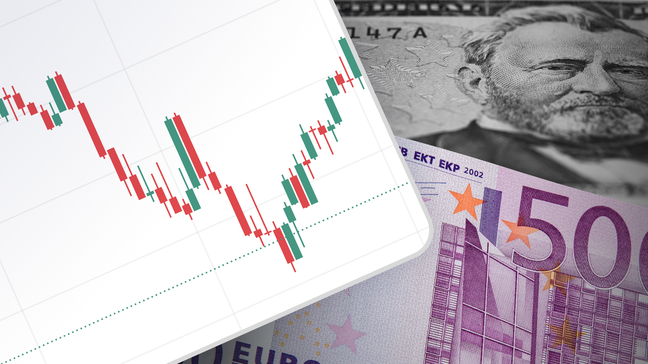Cautious optimism prevails in the market as traders await this week’s top-tier data/events early Thursday. Adding to the positive mood is a lack of major negatives from China equities, as well as the upbeat performance of Wall Street and softer yields.
Amid these plays, the US Dollar extends the previous day’s losses despite lacking downside momentum. The same allows the Gold price to recover from a two-month-old rising support line and help crude oil to reverse the previous day’s losses.
Further, EURUSD and GBPUSD extended the previous day’s recovery moves as recent updates from the European Central Bank (ECB) and the Bank of England (BoE) were mostly hawkish. On the same line, AUDUSD and NZDUSD edge higher while USDJPY sellers cheer concerns about the Bank of Japan’s (BoJ) exit from negative rates.
Elsewhere, BTCUSD struggles to cheer the US SEC’s approval of the Bitcoin spot ETF while ETHUSD retreats from an eight-month high after rising the most since early November the previous day.
Following are the latest moves of the key assets:
- Brent oil picks up bids to reverse the previous day’s losses around $77.50 by the press time.
- Gold price prints the biggest intraday gains in two weeks near $2,035 at the latest.
- USD Index remains pressured around 102.20 despite lacking downside momentum of late.
- Wall Street closed with minor gains and so did the Asia-Pacific stocks. On the same line, equities in the UK and Europe edge higher during the initial hour.
- BTCUSD and ETHUSD both print mild losses around $46,000 and $2,580 respectively after reversing from the yearly high earlier in the week.
US Dollar retreats ahead of US CPI…
The US Dollar Index (DXY) for the second consecutive day despite lacking downside momentum near 102.30 while the US Treasury bond yields remain pressured. It’s worth noting that Wall Street closed positive and allowed the US stock futures, as well as the Asia-Pacific equities, to edge higher.
US Treasury Secretary Janet Yellen signaled softer inflation clues in her speech from Boston on Wednesday and dragged the US Dollar down. The policymaker, however, also said, “Significant work remains to be done,” while pledging to use all tools at their disposal to bring costs down, which in turn kept traders on their toes ahead of today’s US Consumer Price Index (CPI) for December and put a floor under the US Dollar. That said, New York Fed President John C. Williams pushed back the Fed rate cuts but maintained a neutral tone while saying, “Fed in ‘good place,’ has time to think about what’s next for rates.”
In a show of China’s efforts to tame troubles at home, Beijing’s National Immigration Administration (NIA) is streamlining procedures to attract foreign nationals business, sturdy and tourism. On a different page, US Secretary of State Antony Blinken warned Houthi militants while saying, “There will be consequences for continued attacks in the Red Sea.”
Elsewhere, European Central Bank’s (ECB) policymaker and Spanish central bank head Pablo Hernandez de Cos cited slower inflation growth and lower rates in his speech the previous day. Further, ECB Governing Council member Isabelle Schnabel mentioned, “There is evidence that sentiment indicators are bottoming out.” Further, the Bank of England (BoE) Governor Andrew Bailey said, “It's important to return UK inflation to target.” BoE Governor Bailey also defended restrictive monetary policies and tried pushing back hopes of witnessing the BoE rate cuts.
Furthermore, the Bank of Japan (BoJ) maintains an economic assessment of six regions out of nine in its quarterly Sakura report. The BoJ report lifts the assessment of two regions while cutting for one. That said, the Organisation for Economic Co-operation and Development (OECD) Secretary-General Mathias Cormann also advocated for higher rates in Japan by saying, “Japan's monetary policy can gradually and modestly begin tightening.” Furthermore, an ex-BoJ Official Makoto Sakurai said that the BoJ "is completely ready” to end negative rates in April 2024.
Australia’s trade figures for December were also out earlier in the day and helped the Australian Dollar (AUD) to edge higher as the Trade Balance grew to 11,473M from 7,129M, versus 7,500M expected. It’s worth noting that the Imports slumped -7.9% from -1.9% while the Exports improved to 1.7% from 0.4% prior.
Also, a surprise build in the US Oil inventories, per the Energy Information Administration (EIA) weekly data, weighed on the energy prices. That said, EIA Crude Oil Stocks Change rose by 1.338M for the week ended on January 05 versus -0.675M expected and -5.503M prior.
- Strong buy: USDCAD, USDJPY
- Strong sell: Crude Oil, US Dollar, GBPUSD
- Buy: BTCUSD, ETHUSD, Nasdaq, Gold
- Sell: DAX, FTSE 100, BTCUSD, AUDUSD, EURUSD
ECB Monthly Bulletin, US CPI in the spotlight…
While the US CPI for December is this week’s top-tier data and will roil the markets during the North American session, the ECB’s Monthly Economic Bulletin will also be observed closely for intermediate moves, especially amid the economic fears surrounding the Eurozone. Also, central bankers from the US and Europe are up for speaking and may entertain market players. That said, traders will be interested in seeing higher inflation to defend the US Dollar and the hawkish Fed signals amid upbeat US employment conditions, which in turn will weigh on the riskier assets and currencies.
May the trading luck be with you!




